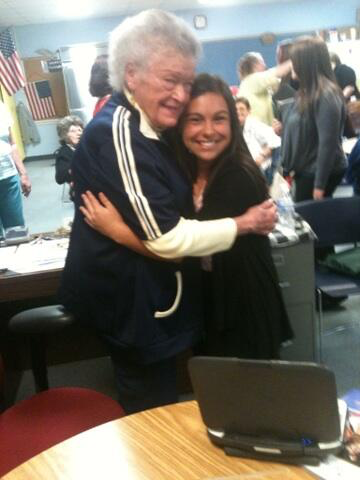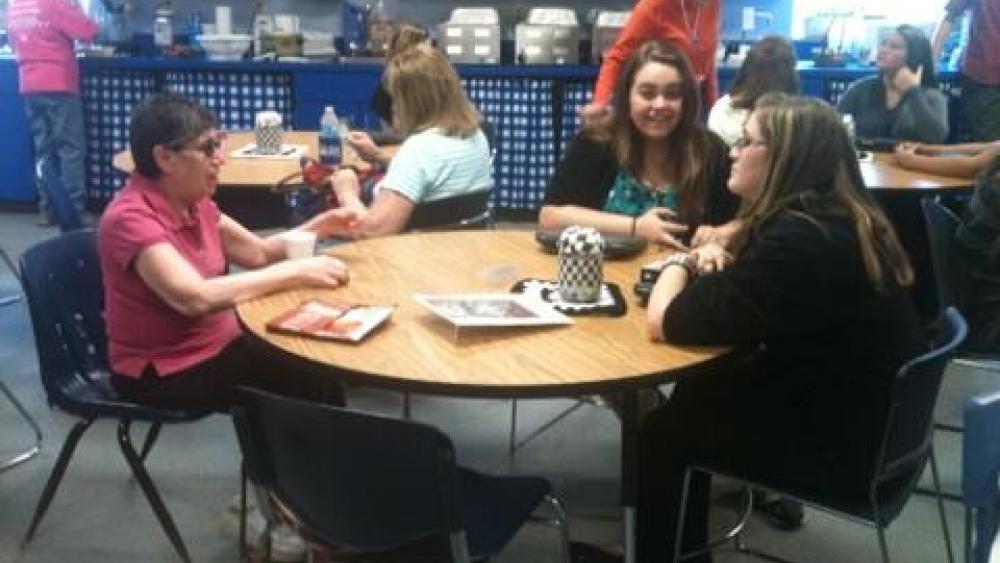Guest Blog by Ryan Steuer, Executive Director at Magnify Learning
At the end of an urban schools’ 8th grade group presentations, learners were met with smiles, tears, and hugs. For this presentation, it helped that their audience was a group of senior citizens who had been working with them for 4 weeks. The two groups had played bingo together, shared lunch, and created memories.

As educators, we all want to see our learners filled with passion as they go through our projects, but what are the major tenets to creating student presentations filled with passion? The two key tenets to an intergenerational project are philanthropy and 21st Century Skills.
Learning to Give is a national nonprofit organization bringing philanthropy to the classroom. The organization begins by defining philanthropy as using your time, talent, and treasure to help others. Learning to Give can take classrooms further into philanthropy with philanthropic standards and over 1,700 teacher generated lessons designed to bring philanthropic ideas like advocacy, giving, and civic engagement to classrooms.
We should not expect our learners to engage in the political process or demonstrate empathy to their peers if we are not intentionally teaching these skills.
In the same way, we cannot expect our learners to excel with the 4Cs of 21st Century Skills – critical thinking, collaboration, communication, and creativity – if we are not teaching and practicing these skills. Partnership for 21st Century Learning (P21) has taken up the charge to advocate for 21st Century Skills by engaging educators, businesses and government officials. P21 is moving the needle by recognizing exemplary 21st Century learning sites, online courses, and continually pushing the conversation of changing the traditional classroom.
With these two organizations leading our definitions of philanthropy and 21st Century Learning, let’s get back into our real world example project to see what they look like with learners at the center.
 The final presentation of nonfiction writing to the senior citizens had 3-4 teenagers presenting to 10 senior citizens. The presentation, a biographical entry and visuals on past decades through the lens of one of the senior citizens in the room, was extremely moving. When reporting out the major inventions and historical events, each was contextualized through the specific life of a senior citizen in the audience. The students collaborated to gather research, communicated as they interviewed the senior citizens, and thought critically and creatively as they connected historical events to the personal lives of the senior citizens.
The final presentation of nonfiction writing to the senior citizens had 3-4 teenagers presenting to 10 senior citizens. The presentation, a biographical entry and visuals on past decades through the lens of one of the senior citizens in the room, was extremely moving. When reporting out the major inventions and historical events, each was contextualized through the specific life of a senior citizen in the audience. The students collaborated to gather research, communicated as they interviewed the senior citizens, and thought critically and creatively as they connected historical events to the personal lives of the senior citizens.
Empathy built as the teens heard what it was like growing up with parents from the Great Depression, losing a son in the Vietnam War, or not growing up with a computer let alone a cell phone. Being able to interact with an older generation changed the lives of the 8th graders, many of whom were self proclaimed ‘scared of older people’ at the beginning of the project. One 8th grader said, “Now I know how to talk with my grandpa.”
Learners were caring and building relationships with people through conversations, bingo, and finding common ground. For more information on intergenerational lessons explore this toolkit from Learning to Give.
How do you get started creating projects and learning experiences that inspire, challenge and change lives? Let me suggest two small edits to whatever unit planning form you currently use.
First, add a section for a philanthropy standard. Second, add another section for adding one of the 4 Cs. By adding one of each, you will help to make a unit jump out of the textbook and into the hearts of your students.
We all want our learners to be involved in giving back to their communities, and they need 21st Century Skills to compete after high school. Learning to Give and P21 are great places to start the journey!
Where have you found success in bringing philanthropy and 21st Century Skills into the classroom? Find Learning to Give on Facebook or Twitter to comment and share this story.
About the author:
Ryan Steuer believes our job as educators is to fill learners with passion to help those around them. Ryan believes Project Based Learning and Service Learning are the vehicles to stirring passion and mastering standards! After starting his career as an Industrial Engineer, Ryan brought his business background to 8th graders in Indianapolis, where he created a PBL school within a school. Now as the Executive Director of Magnify Learning, a nonprofit organization specializing in PBL professional development, Ryan shares his passion for student driven learning environments with teachers across the country.
Follow Ryan on Twitter: @ryansteuer @magnifylearning
